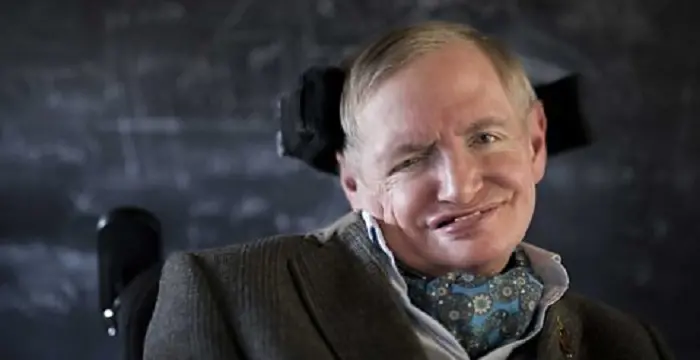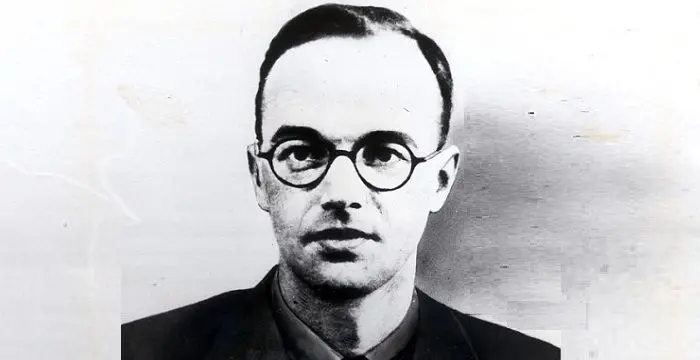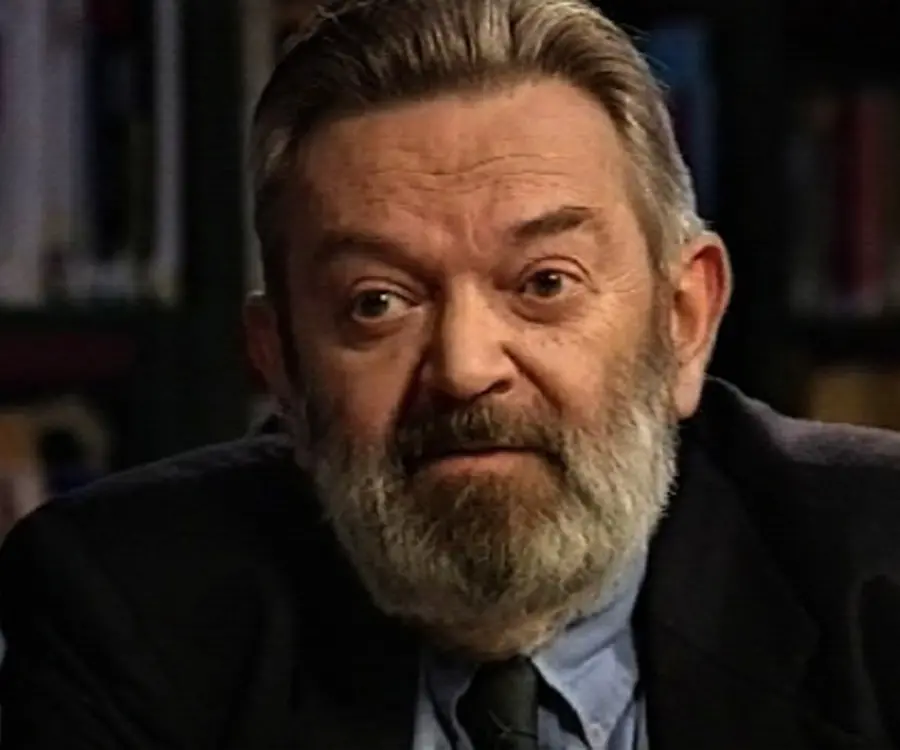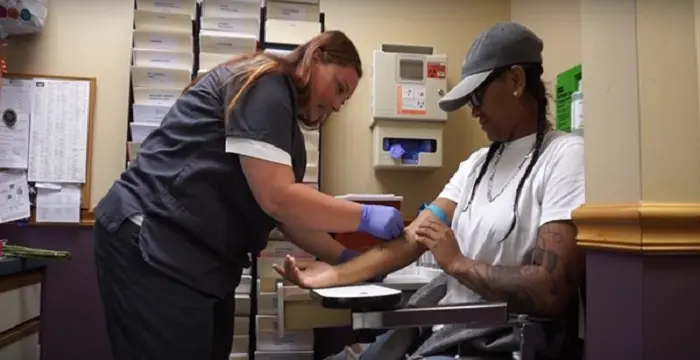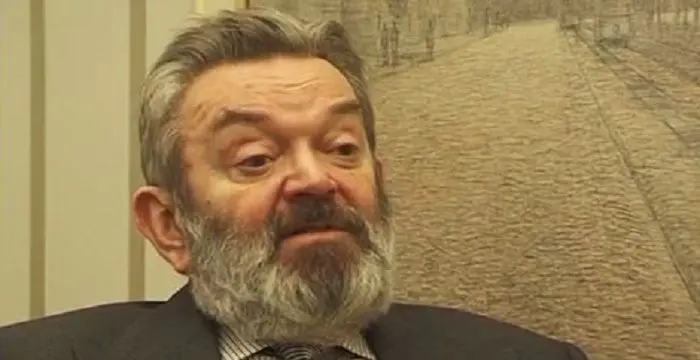
Martinus J. G. Veltman - Theoretical Physicist, Birthday and Childhood
Martinus J. G. Veltman's Personal Details
Martinus J
| Information | Detail |
|---|---|
| Birthday | June 27, 1931 |
| Nationality | Dutch |
| Famous | Scientists, Physicists, Theoretical Physicist |
| Spouses | Anneke |
| Known as | Martinus Justinus Godefriedus Veltman |
| Childrens | Hélène, Hugo, Martijn |
| Universities |
|
| Birth Place | Waalwijk, Netherlands |
| Gender | Male |
| Sun Sign | Cancer |
| Born in | Waalwijk, Netherlands |
| Famous as | Theoretical Physicist |
// Famous Theoretical Physicist
Stephen Hawking
Stephen Hawking was an English theoretical physicist, cosmologist and author. This biography offers detailed information about his childhood, career, life, achievements, trivia and timeline.
Abdus Salam
Abdus Salam was a renowned scientist who belonged to Pakistan. Salam was the first and only recipient of the ‘Nobel Prize’ from his country. This biography provides detailed information about her childhood, life, achievements, works & timeline.
Klaus Fuchs
Emil Julius Klaus Fuchs was a German theoretical physicist and an atomic spy who provided valuable information to the Soviet Union. This biography profiles his childhood, life, career, achievements and timeline.
Martinus J. G. Veltman's photo
Who is Martinus J. G. Veltman?
Martinus Justinus Godefriedus Veltman is a Dutch theoretical physicist, known for his work on renormalization of Yang–Mills theories. Born in early 1930s in the ancient city of Waalwijk in Southern Netherland, he passed out from school with very low grades and then entered the University of Utrecht with Physics because medium level technical schools would not accept him. The scenario at Utrecht was also equally bad; there was no good teacher and the lectures were uninspiring. Ultimately, he took five years to clear his candidaats exam and after spending few years doing petty jobs, he finally earned his PhD at the age of thirty-two. In the same year he joined SLAC National Accelerator Laboratory at Stanford and developed a computer program for symbolic manipulation of mathematical equations called Schoonschip. Much later, while working at the University of Utrecht with his graduate student Gerardus ’t Hooft, he used this program to provide the required mathematical basis for the electroweak theory. The work later earned them the Nobel Prize in Physics. Although he spent the last part of his working life at the University of Michigan he came to Netherland after his retirement and now lives at Bilthoven.
// Famous Scientists
Juliane Koepcke
Juliane Koepcke is a German-Peruvian biologist, who was the lone survivor among the 92 passengers and crew of the ill-fated LANSA Flight 508 that crashed in the Peruvian rainforest on 24 December 1971. Know more about her life in this biography.
Henry Cavendish
Henry Cavendish was a theoretical chemist and physicist, renowned for discovery of hydrogen and calculation of the mass of earth. To know more about his childhood, profile, timeline and career read on
Konstantin Tsiolkovsky
Konstantin Tsiolkovsky was a Russian rocket scientist and a pioneer of astronautics. This biography provides detailed information about his childhood, family, personal life, career, achievements, etc.
Childhood & Early Years
Martinus Justinus Godefriedus Veltman was born on June 27, 1931 in the ancient city of Waalwijk, located in Southern Netherland. His father was a primary school headmaster, who placed great emphasis on education. Martinus was the fourth of his parents’ six children.
Until 1940, his life was quite uneventful. He started his education at a local elementary school and was considered a good student. The turbulence began when in 1940 the Germans marched into the town. They turned their school into a military barrack and so classes were improvised.
In 1943, he entered the high school, but his grades began to suffer. Moreover, he had a bad aptitude for languages and they were required to learn three foreign languages! Sometime now, he also developed interest in electronics. After some time, he began to repair radios, with his right hand index finger as his only measuring tool and in the process received electrical shocks a number of times.
In 1948, he graduated from school with very poor marks. In general, students like him went to a medium level technical school called MTS in Hertogenbosch. However, because of his poor marks, there was very little chance of him getting admission there.
Therefore, on the advice of his physics teacher, he enrolled at University of Utrecht with physics. Unfortunately, the condition of the university was not at all satisfactory. Because of the war, there were very few good professors left and lectures were not at all inspiring. Therefore, he did not develop any interest in his subject.
It took him five years to complete the course and pass his candidates exam. Subsequently, he was appointed a part-time teacher at a lower technical school. Sometime now, he also came across ‘The Meaning of Relativity’ by Albert Einstein. He slowly started taking interest in physics.
In 1955, Veltman became an assistant to Prof. Michels of the Van Der Waals laboratory in Amsterdam. His job was to maintain his library and occasionally prepare his speech. As an added bonus, he came across many renowned physicists in that period.
Later in the year, he moved to Utrecht and working under Leon Van Hove earned his master’s degree in 1956. Subsequently, he was drafted in the army and upon returning to Utrecht in February 1959 after two years of military duty, he once again started working under Leon Van Hove for his PhD.
Since he wanted to work on particle physics, he had to take special courses in Naples and Edinburgh. Later in 1961, Veltman joined the theory division at CERN in Geneva, where Van Hove had become the director in 1960.
Finally in 1963, he received his PhD in theoretical physics. His dissertation was titled ‘Intermediate particles in S-matrix theory and calculation of higher order effects in the production of intermediate vector bosons’.
Career
In 1963, soon after earning his PhD, Veltman joined SLAC National Accelerator Laboratory under Stanford University, Stanford, California. Here he started developing the Schoonschip, a computer program meant for symbolic manipulation of mathematical equations. It is now considered the very first computer algebra system.
In the spring of 1964, Veltman returned to CERN. Later in 1966, he visited Brookhaven National Laboratory, Long Island, New York City, for a brief period, returning to the Netherland the same year.
In September 1966, he joined University of Utrecht as Professor of theoretical physics. Simultaneously, he also began to function as the editor of ‘Physics Letter’; but gave up the responsibility in the summer of 1968.
In April 1968, he made a one-month visit to the Rockefeller University. He considers this visit a turning point in his career because it was here that he started the work, which would one day bring him the Nobel Prize.
Later in the same year, he went to Orsay in France on the invitation of Claude Bouchiat and Philippe Meyer. Here too he continued his work till his return to Utrecht at the end of the year.
On returning to Utrecht, Veltman organized a team of researchers and continued with his work. At the same time, he started upgrading the educational system and worked to get a good computer system, finally selecting a CDC 6800 computer.
Meanwhile in 1969, Gerardus 't Hooft joined his team as a research student; choosing the renormalization of Yang–Mills theories as his dissertation. Veltman was highly excited because he was working on the same subject all this time.
The first paper was published in 1971. It was followed by an intense collaboration. Subsequently, they developed the technique of dimensional regularization and showed how Yang–Mills theories could be renormalized. The work made them internationally famous and later earned the Nobel Prize.
In the summer of 1979, Veltman received an invitation to spend a year at the University of Michigan on a sabbatical. However, due to some unavoidable reasons, he could depart only in March 1980. Once there, he was invited to join the faculty permanently.
After few months of vacillation, he finally joined the University in September 1981 and was elected to the John D. and Catherine T. MacArthur chair. It was a highly prestigious post and came with a yearly grant of $35000, which gave him much freedom to buy equipments or attend science conferences.
He remained at the University of Michigan until his retirement in 1996. During that period, he maintained regular ties with Europe, especially Spain. He had ties with the University of Madrid and visited the institution for two months almost every summer.
Major Work
Professor Veltman is best known for his work on renormalization of Yang–Mills theories. Prior to their work, the electroweak theory lacked any mathematical foundation. In 1969, Veltman and his graduate student Gerardus ’t Hooft set out to change (renormalize) it into a workable theory, which was free from irrational infinite quantities.
Veltman had by then designed a computer program meant for symbolic manipulation of mathematical equations. Now they used that to provide the required mathematical basis and identified the properties of the W and Z particles. Later the scientists used that model to calculate the physical quantities of other particles.
Awards & Achievements
In 1999, Veltman was awarded the Nobel Prize in Physics jointly with Gerardus ’t Hooft "for elucidating the quantum structure of electroweak interactions in physics".
In 1980, Veltman became member of the Royal Netherlands Academy of Arts and Sciences.
Personal Life & Legacy
In 1960, Veltman married Anneke. The couple has three children. Their eldest child Hélène studied particle physics at Berkeley but now works in the banking sector in London. The second child Hugo runs a restaurant called Solstice in Los Angeles and his youngest child Martijn is in the movie industry in Hollywood.
After he retired in 1996, he and his wife Anneke returned to Netherland and settled in Bilthoven, a town where they lived prior to 1981. However, their two sons chose to stay back in the USA while his daughter continues to live in London.
In 2003, he published a book about particle physics titled, ‘Facts and Mysteries in Elementary Particle Physics’. The book is meant for general readers.
On March 25, 1971, Asteroid 2066 T-1 was named in his honor as Asteroid 9492 Veltman.
Trivia
While working at CERN, Veltman had the opportunity to meet Tsung-Dao Lee and asked him for some advice. To that, Lee said, "Don't make mistakes". Veltman thought that was funny and began to laugh. However, Lee did not appreciate that. He took some time to teach him the seriousness of the work.
// Famous Physicists
Henry Cavendish
Henry Cavendish was a theoretical chemist and physicist, renowned for discovery of hydrogen and calculation of the mass of earth. To know more about his childhood, profile, timeline and career read on
Walter Kohn
Nobel Laureate Walter Kohn was an Austrian-born American theoretical chemist and physicist. Check out this biography to know about his childhood, life, achievements, works & timeline.
Nikola Tesla
Nikola Tesla was a Serbian-American inventor, best known for his development of alternating current electrical systems. This biography of Nikola Tesla provides detailed information about his childhood, life, achievements, works & timeline.
Martinus J. G. Veltman's awards
| Year | Name | Award |
|---|---|---|
Other | ||
| 0 | Nobel Prize in physics (1999) | |
Martinus J. G. Veltman biography timelines
- // 27th Jun 1931Martinus Justinus Godefriedus Veltman was born on June 27, 1931 in the ancient city of Waalwijk, located in Southern Netherland. His father was a primary school headmaster, who placed great emphasis on education. Martinus was the fourth of his parents’ six children.
- // 1940Until 1940, his life was quite uneventful. He started his education at a local elementary school and was considered a good student. The turbulence began when in 1940 the Germans marched into the town. They turned their school into a military barrack and so classes were improvised.
- // 1943In 1943, he entered the high school, but his grades began to suffer. Moreover, he had a bad aptitude for languages and they were required to learn three foreign languages! Sometime now, he also developed interest in electronics. After some time, he began to repair radios, with his right hand index finger as his only measuring tool and in the process received electrical shocks a number of times.
- // 1948In 1948, he graduated from school with very poor marks. In general, students like him went to a medium level technical school called MTS in Hertogenbosch. However, because of his poor marks, there was very little chance of him getting admission there.
- // 1955In 1955, Veltman became an assistant to Prof. Michels of the Van Der Waals laboratory in Amsterdam. His job was to maintain his library and occasionally prepare his speech. As an added bonus, he came across many renowned physicists in that period.
- // 1956 To Feb 1959Later in the year, he moved to Utrecht and working under Leon Van Hove earned his master’s degree in 1956. Subsequently, he was drafted in the army and upon returning to Utrecht in February 1959 after two years of military duty, he once again started working under Leon Van Hove for his PhD.
- // 1960 To 1961Since he wanted to work on particle physics, he had to take special courses in Naples and Edinburgh. Later in 1961, Veltman joined the theory division at CERN in Geneva, where Van Hove had become the director in 1960.
- // 1960In 1960, Veltman married Anneke. The couple has three children. Their eldest child Hélène studied particle physics at Berkeley but now works in the banking sector in London. The second child Hugo runs a restaurant called Solstice in Los Angeles and his youngest child Martijn is in the movie industry in Hollywood.
- // 1963Finally in 1963, he received his PhD in theoretical physics. His dissertation was titled ‘Intermediate particles in S-matrix theory and calculation of higher order effects in the production of intermediate vector bosons’.
- // 1963In 1963, soon after earning his PhD, Veltman joined SLAC National Accelerator Laboratory under Stanford University, Stanford, California. Here he started developing the Schoonschip, a computer program meant for symbolic manipulation of mathematical equations. It is now considered the very first computer algebra system.
- // 1964 To 1966In the spring of 1964, Veltman returned to CERN. Later in 1966, he visited Brookhaven National Laboratory, Long Island, New York City, for a brief period, returning to the Netherland the same year.
- // Sep 1966 To 1968In September 1966, he joined University of Utrecht as Professor of theoretical physics. Simultaneously, he also began to function as the editor of ‘Physics Letter’; but gave up the responsibility in the summer of 1968.
- // Apr 1968In April 1968, he made a one-month visit to the Rockefeller University. He considers this visit a turning point in his career because it was here that he started the work, which would one day bring him the Nobel Prize.
- // 1969Meanwhile in 1969, Gerardus 't Hooft joined his team as a research student; choosing the renormalization of Yang–Mills theories as his dissertation. Veltman was highly excited because he was working on the same subject all this time.
- // 1969Professor Veltman is best known for his work on renormalization of Yang–Mills theories. Prior to their work, the electroweak theory lacked any mathematical foundation. In 1969, Veltman and his graduate student Gerardus ’t Hooft set out to change (renormalize) it into a workable theory, which was free from irrational infinite quantities.
- // 1971The first paper was published in 1971. It was followed by an intense collaboration. Subsequently, they developed the technique of dimensional regularization and showed how Yang–Mills theories could be renormalized. The work made them internationally famous and later earned the Nobel Prize.
- // 1979 To Mar 1980In the summer of 1979, Veltman received an invitation to spend a year at the University of Michigan on a sabbatical. However, due to some unavoidable reasons, he could depart only in March 1980. Once there, he was invited to join the faculty permanently.
- // 1980In 1980, Veltman became member of the Royal Netherlands Academy of Arts and Sciences.
- // 1981 To 1996After he retired in 1996, he and his wife Anneke returned to Netherland and settled in Bilthoven, a town where they lived prior to 1981. However, their two sons chose to stay back in the USA while his daughter continues to live in London.
- // Sep 1981After few months of vacillation, he finally joined the University in September 1981 and was elected to the John D. and Catherine T. MacArthur chair. It was a highly prestigious post and came with a yearly grant of $35000, which gave him much freedom to buy equipments or attend science conferences.
- // 1996He remained at the University of Michigan until his retirement in 1996. During that period, he maintained regular ties with Europe, especially Spain. He had ties with the University of Madrid and visited the institution for two months almost every summer.
- // 1999In 1999, Veltman was awarded the Nobel Prize in Physics jointly with Gerardus ’t Hooft "for elucidating the quantum structure of electroweak interactions in physics".
- // 2003In 2003, he published a book about particle physics titled, ‘Facts and Mysteries in Elementary Particle Physics’. The book is meant for general readers.
// Famous Cancer Celebrities peoples
Jacob Elordi
Jacob Elordi is an Australian actor. Let’s take a look at his childhood, family, personal life, career, etc.
Riele Downs
Riele Downs is a Canadian-American actress & Musical.ly star. Let’s take a look at her family and personal life including age, birthday, net worth, boyfriends and fun facts.
Yammy Xox
Check out all that you wanted to know about Yammy Xox, the famous British YouTube Personality; her birthday, her family and personal life, her boyfriends, fun trivia facts and more.
Kaylee Quinn
Kaylee Quinn is an American dancer, model, and actress. Let’s have a look at her family and personal life including age, date of birth, net worth, relationships, and fun facts.
Sophia Montero
Sophia Montero is an American singer and YouTuber. Let’s have a look at her family and personal life including age, date of birth, net worth, relationships, and fun facts.
Domo Wilson
Check out all that you wanted to know about Domo Wilson, the famous American Vlogger & YouTube Personality; her birthday, her family and personal life, fun trivia facts and more.
Martinus J. G. Veltman's FAQ
What is Martinus J. G. Veltman birthday?
Martinus J. G. Veltman was born at 1931-06-27
Where is Martinus J. G. Veltman's birth place?
Martinus J. G. Veltman was born in Waalwijk, Netherlands
What is Martinus J. G. Veltman nationalities?
Martinus J. G. Veltman's nationalities is Dutch
Who is Martinus J. G. Veltman spouses?
Martinus J. G. Veltman's spouses is Anneke
Who is Martinus J. G. Veltman childrens?
Martinus J. G. Veltman's childrens is Hélène, Hugo, Martijn
What was Martinus J. G. Veltman universities?
Martinus J. G. Veltman studied at Utrecht University
What is Martinus J. G. Veltman's sun sign?
Martinus J. G. Veltman is Cancer
How famous is Martinus J. G. Veltman?
Martinus J. G. Veltman is famouse as Theoretical Physicist
